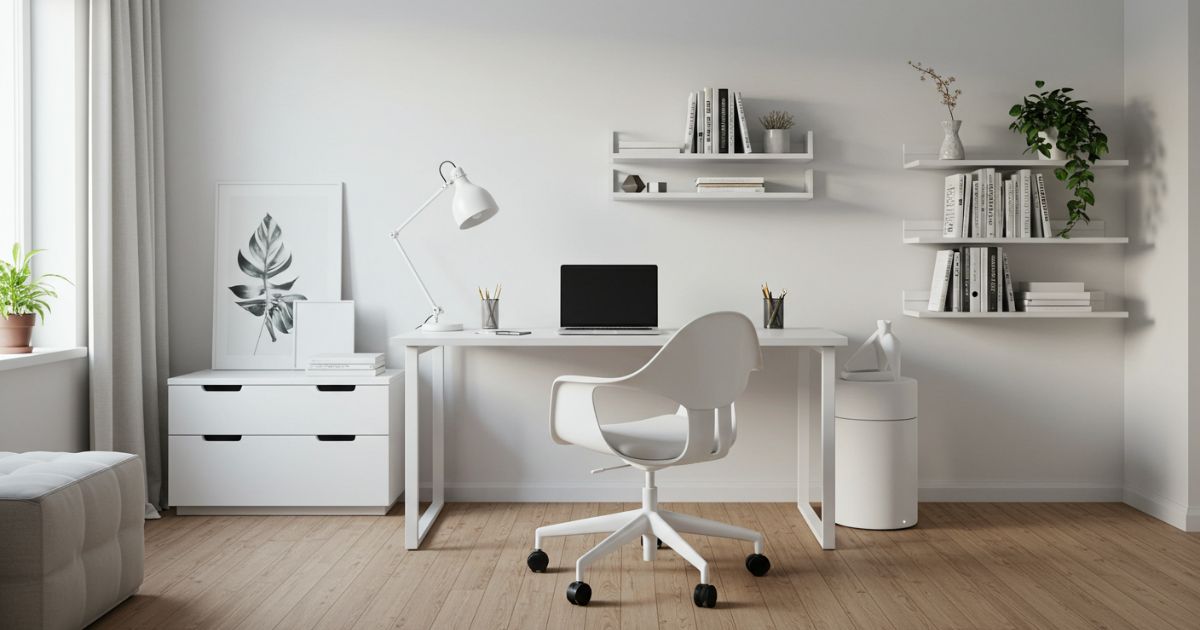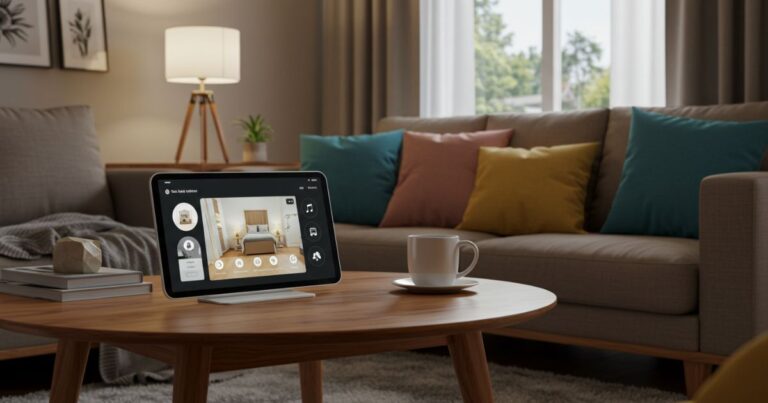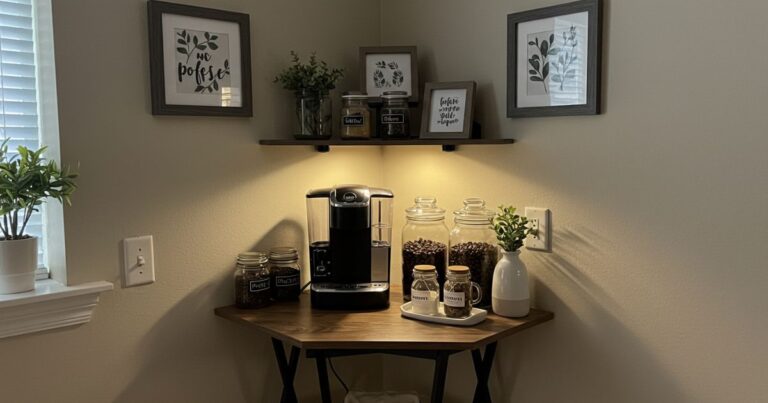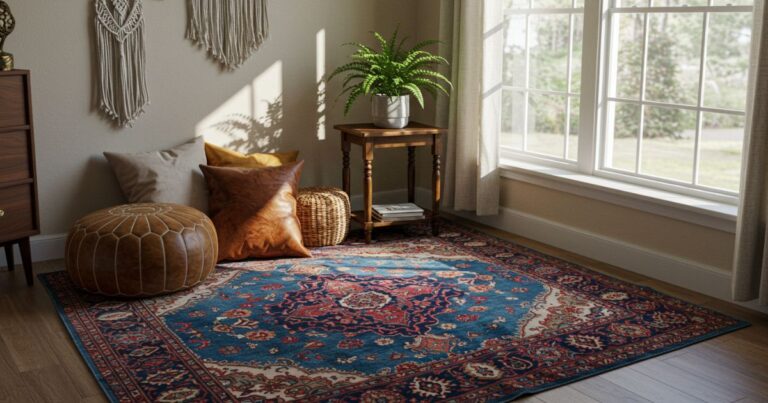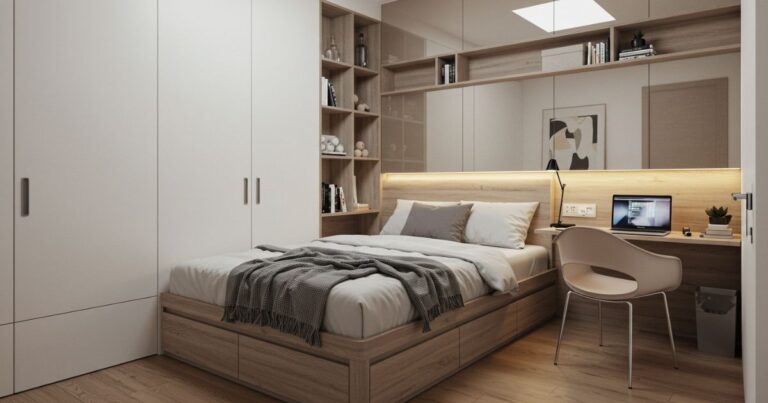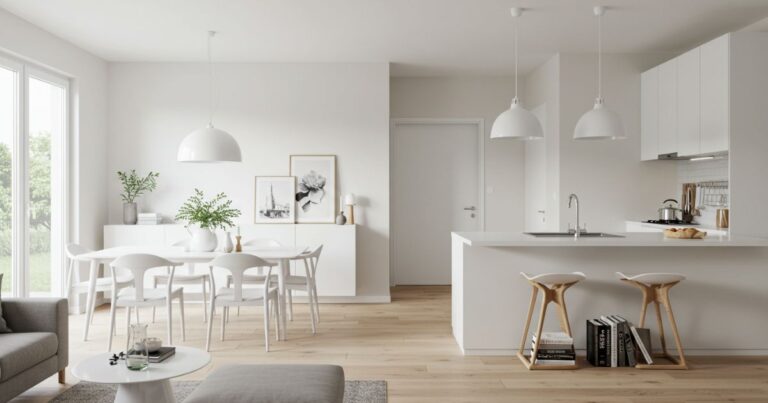Dream Home Office Ideas to Inspire Productivity and Comfort
Working from home has become a staple for many professionals, entrepreneurs, and students alike. The importance of a dedicated, comfortable, and inspiring workspace cannot be ignored. With the right home office design, you can increase your productivity, improve your mental well-being, and create a space that fosters creativity and focus.
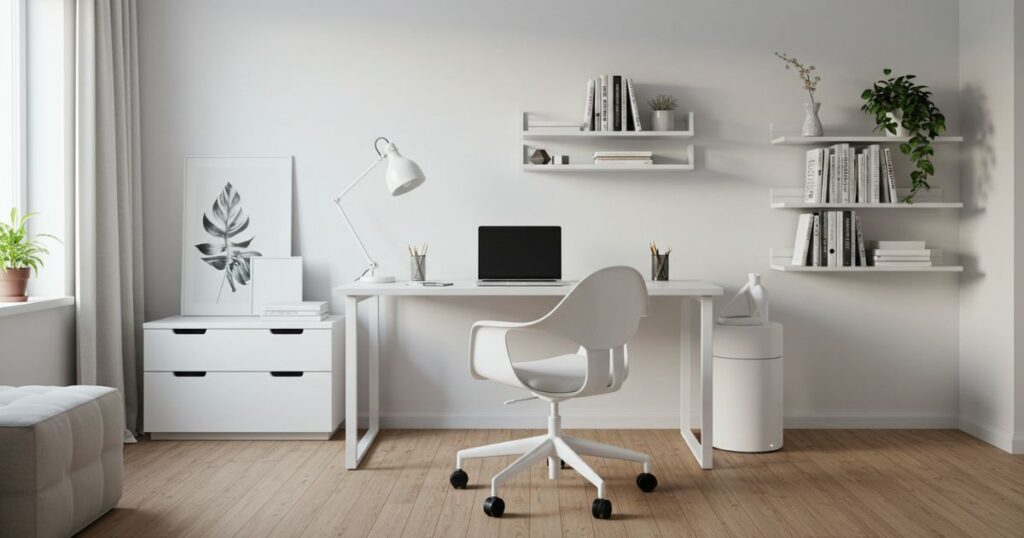
In this article, we explore some of the best dream home office ideas that will help you transform your workspace into your dream office. Whether you are looking for a minimalist approach, an inspiring setup, or a functional multi-purpose room, these ideas will help you design a space that caters to both your work and lifestyle.
1. Incorporate Natural Light for a Bright, Inviting Space
Natural light is a key factor in creating a productive home office. Studies have shown that exposure to natural light can improve mood, energy, and overall productivity. Make sure your office is positioned near a window or natural light source.
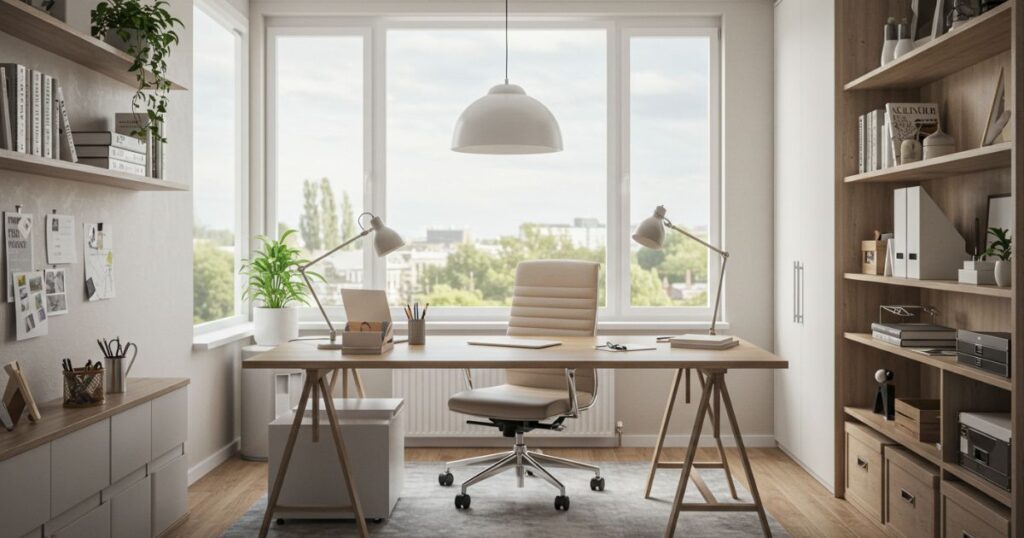
If your office space doesn’t have access to large windows, consider using light-colored walls, sheer curtains, or glass doors to allow light to filter through. Mirrors can also help reflect light and create the illusion of a brighter room. Additionally, task lighting such as desk lamps with adjustable brightness can complement natural light and help reduce eye strain.
2. Opt for Ergonomic Furniture for Comfort and Health
Spending long hours at a desk can take a toll on your body, so investing in ergonomic furniture is essential for comfort and health. Start with an ergonomic chair that supports your lower back and encourages good posture. The right chair should have adjustable height, armrests, and lumbar support.
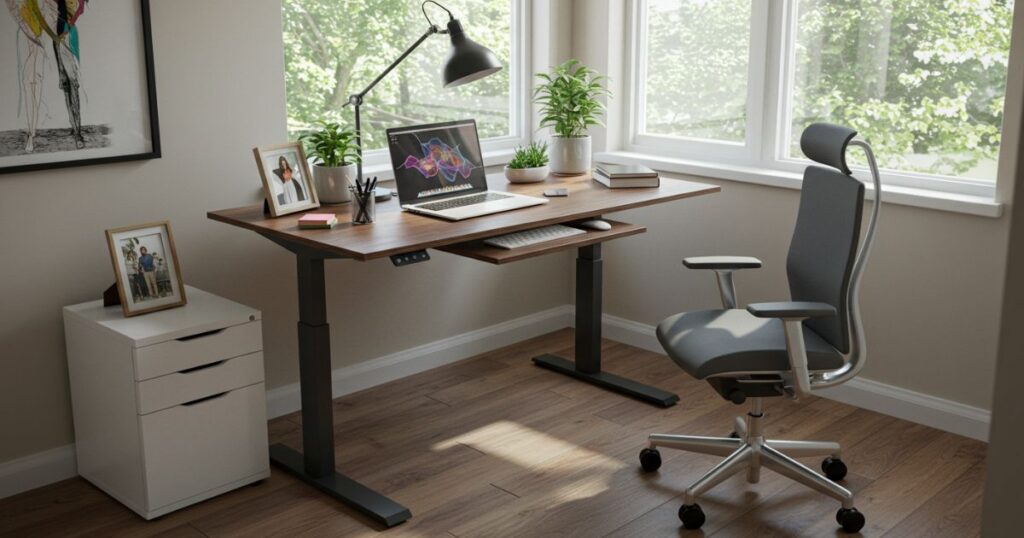
Next, choose a height-adjustable desk that allows you to alternate between sitting and standing throughout the day. This helps alleviate back pain and reduces the risk of fatigue. To complete your ergonomic setup, make sure your desk is at the right height for your computer screen to reduce neck strain. A keyboard tray that places the keyboard and mouse at a comfortable angle is another great addition.
3. Create a Functional and Organized Storage System
One of the biggest challenges in a home office is keeping everything organized. Clutter can quickly pile up, leading to distractions and reduced efficiency. Consider adding built-in shelves, storage cabinets, or floating shelves to keep essential office supplies neatly tucked away.
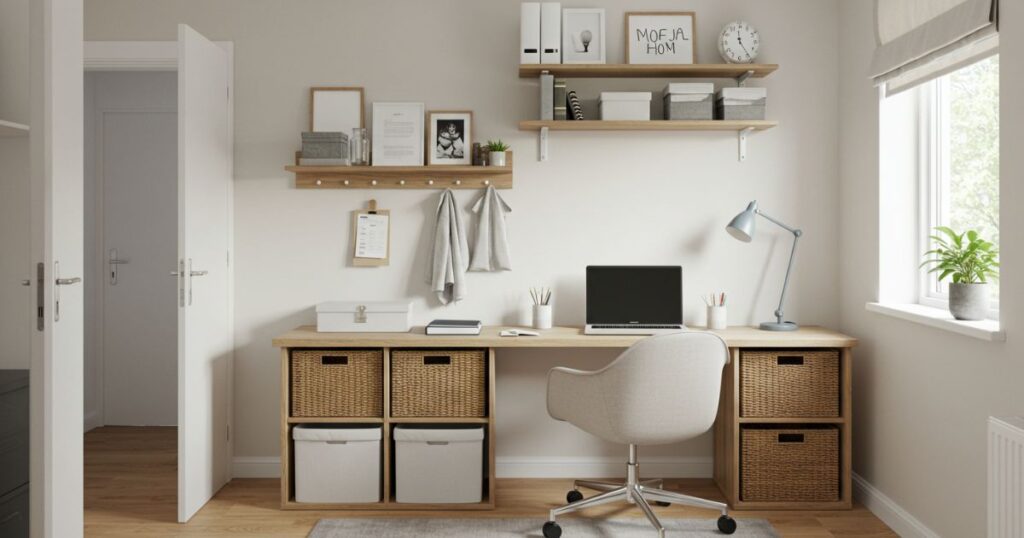
You can also use drawer organizers and file cabinets to store papers and documents. For smaller items like pens, markers, or paperclips, opt for desktop organizers that can be placed on your desk for easy access. A corkboard or magnetic board is an excellent tool for pinning important notes or reminders.
To further maximize your storage space, think about utilizing vertical storage or installing a wall-mounted desk. These solutions help keep your workspace uncluttered and make the most of the available space.
4. Incorporate Personal Touches for Inspiration
Your home office should be a space that inspires creativity and motivates you to work. Adding personal touches, such as artwork, photographs, or decorative items, can help make the space feel unique and comforting.
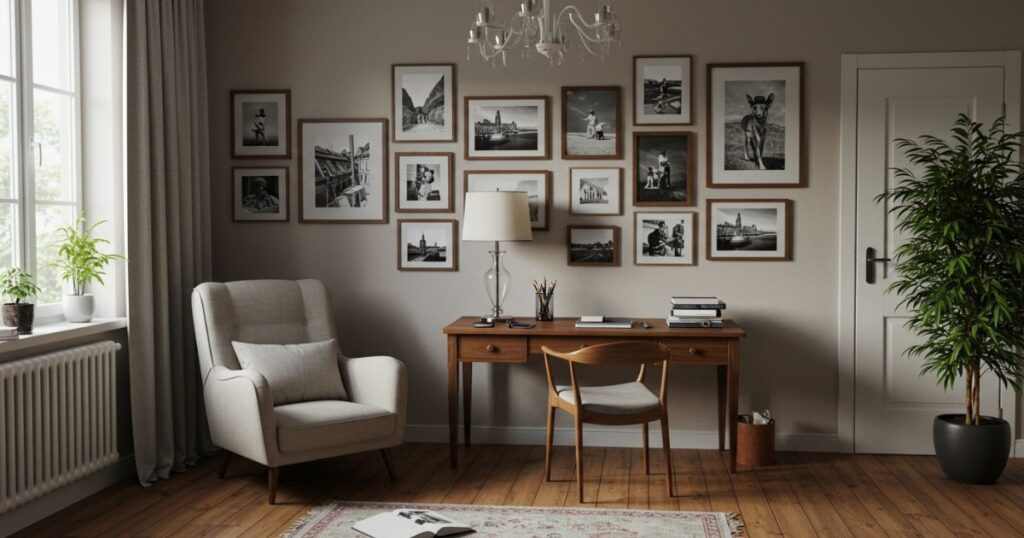
Consider displaying some of your favorite books or plants on your shelves. Plants not only add a touch of nature to your space but also improve air quality and reduce stress. Aromatherapy using essential oils or scented candles can also help create a calming atmosphere that enhances focus.
By blending personal style with functional design, you create an environment where you’ll feel comfortable and motivated throughout the day.
5. Design a Dedicated Meeting Space for Virtual Conferences
As remote work continues to grow, having a designated space for virtual meetings and conferences is a must. Set up a corner or section of your home office that is equipped with the right technology for video calls.
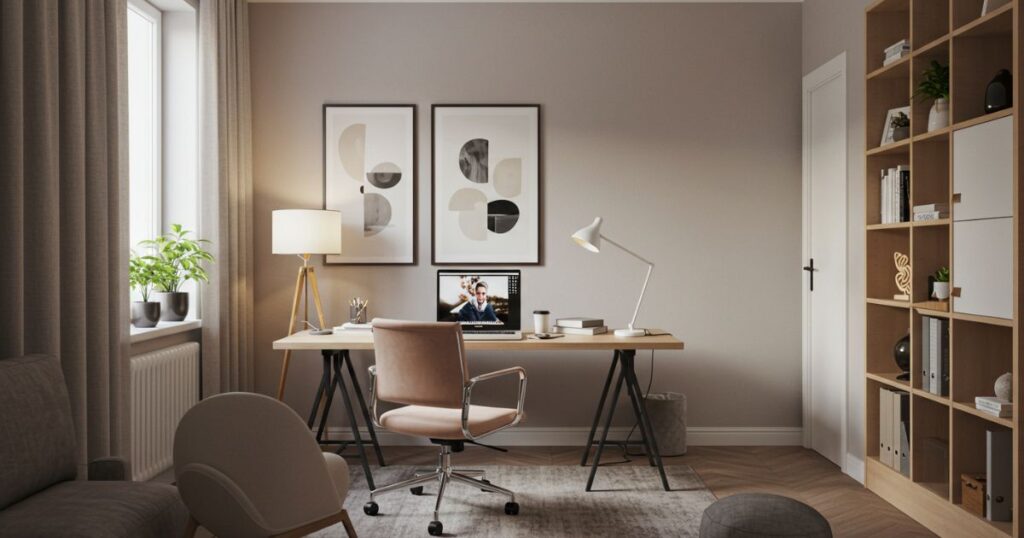
Ensure your background is clean and professional. A plain wall or a backdrop with minimal distractions is ideal. You can also add a small bookshelf or art pieces to create an aesthetically pleasing backdrop.
For the best video conferencing experience, invest in a high-quality webcam, microphone, and headset to ensure clear audio and video quality. Proper lighting is also essential for video calls, place a ring light near your desk to brighten your face and eliminate shadows.
6. Design a Multi-Functional Office Space
Many people need their home office to serve multiple purposes, especially if the space is small. If you’re working with a limited area, try incorporating multi-functional furniture. For example, a fold-out desk or a wall-mounted desk can help you maximize space when you’re not working.
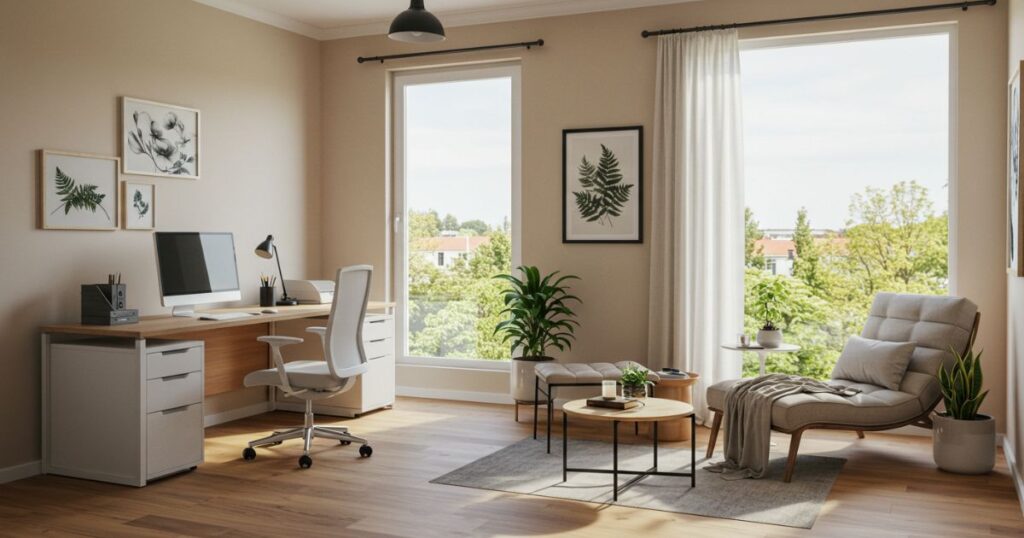
If your home office also doubles as a guest room or a creative studio, you can use modular furniture or flexible shelving systems to create separate zones. Sliding doors or room dividers can be used to visually separate the different areas of the room without making it feel cramped.
With a multi-functional office, you can easily switch between work, rest, and creative activities with ease.
7. Add High-Tech Gadgets for Increased Efficiency
In today’s digital age, having the right technology can significantly boost your productivity. Ensure your home office is equipped with the best tech tools to make your work easier and more efficient.
Invest in a fast, reliable computer with the necessary specifications for your work needs. Whether you’re editing video, running software applications, or doing research, your computer should be powerful enough to handle all tasks without lagging.
Also, consider getting a wireless printer and a scanner to streamline document management. Smart speakers or smart assistants like Amazon Alexa or Google Assistant can help you manage tasks hands-free, whether it’s setting reminders or making quick calls.
8. Incorporate a Relaxation Area for Breaks
All work and no play is never a good approach. Make sure your dream home office has a dedicated space for relaxation and recharging during breaks. A cozy corner with a comfortable armchair, a small coffee table, and a good reading lamp can help you unwind and refresh during the workday.

You could also incorporate a mini-fridge for snacks and beverages or a small coffee station to help you stay energized. Taking regular breaks in a designated relaxation space will help you stay productive and avoid burnout.
9. Use a Neutral Color Palette with Pops of Color
The colors in your home office can have a significant impact on your productivity and mindset. Stick to a neutral color palette for the walls, furniture, and larger decor items, such as shades of white, beige, or light gray. These colors create a clean, calming environment that promotes focus.
To add some personality and energy to the room, introduce pops of color through accessories, such as throw pillows, rugs, or desk items. Bright colors like blue, yellow, or green can stimulate creativity and focus, while earthy tones like green and brown can create a more grounding and relaxing atmosphere.
10. Maximize Small Spaces with Smart Layouts
Not everyone has the luxury of a large room for their home office, but that doesn’t mean you can’t create an efficient and stylish space. The key to designing a small home office is using the right layout and keeping things compact.
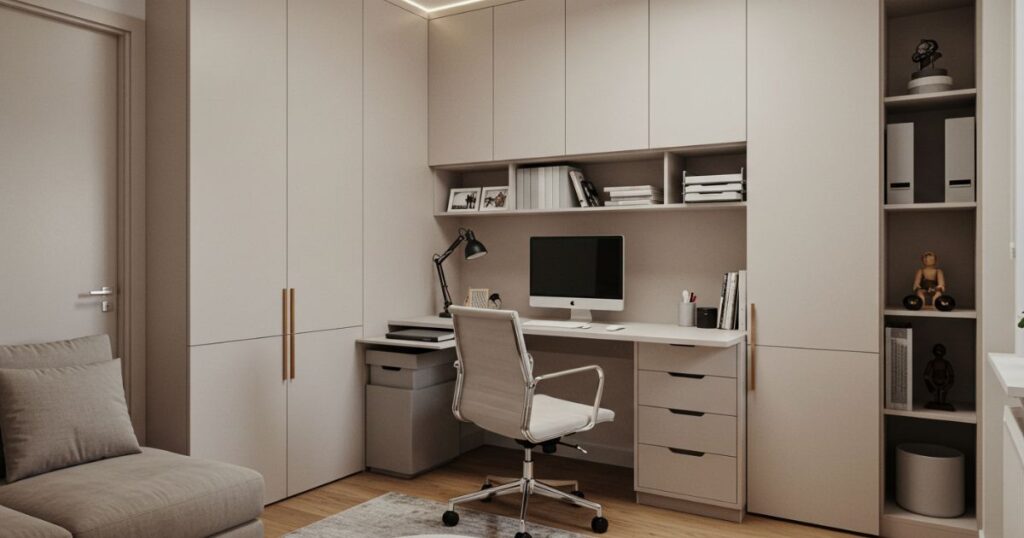
Consider placing your desk near the window for natural light. Opt for floating shelves or wall-mounted storage to free up floor space. Ladder-style desks or corner desks can also be excellent space-saving options for smaller rooms.
By choosing the right layout, you can create a functional office in even the smallest of spaces.
FAQs About Dream Home Office Ideas
Q1: How can I design a home office in a small space?
To maximize a small space, opt for compact furniture such as a corner desk, wall-mounted shelves, and multifunctional furniture. Keep the layout open and uncluttered, using vertical storage to save space.
Q2: What color scheme is best for a home office?
Neutral tones like white, beige, and gray create a calming environment and promote focus. You can add pops of color with accessories like pillows, rugs, or desk items to make the space feel more vibrant.
Q3: What is the most important piece of furniture for a home office?
The most important piece of furniture is an ergonomic chair that supports your posture and keeps you comfortable during long work hours. A height-adjustable desk is also essential for alternating between sitting and standing.
Q4: How can I make my home office inspiring?
Add personal touches like artwork, books, and plants to create a space that reflects your style. Ensure the space is comfortable and motivating, with plenty of natural light and a relaxed atmosphere.
Q5: What technology should I invest in for a home office?
Invest in a reliable computer, high-quality webcam, microphone, wireless printer, and smart speaker. These tools will help improve your efficiency and make working from home more seamless.
Conclusion
Designing your dream home office is all about blending functionality with personal style. Whether you are setting up a minimalist workspace or a multi-functional office, the right furniture, storage solutions, and technology can significantly enhance your productivity and comfort. By incorporating natural light, ergonomic furniture, and thoughtful design elements, you can create an office that inspires creativity and helps you perform at your best.
